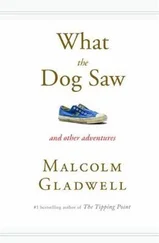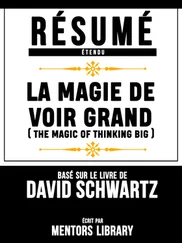Malcolm Gladwell - Blink - The Power of Thinking Without Thinking
Здесь есть возможность читать онлайн «Malcolm Gladwell - Blink - The Power of Thinking Without Thinking» весь текст электронной книги совершенно бесплатно (целиком полную версию без сокращений). В некоторых случаях можно слушать аудио, скачать через торрент в формате fb2 и присутствует краткое содержание. Жанр: Культурология, Психология, на английском языке. Описание произведения, (предисловие) а так же отзывы посетителей доступны на портале библиотеки ЛибКат.
- Название:Blink: The Power of Thinking Without Thinking
- Автор:
- Жанр:
- Год:неизвестен
- ISBN:нет данных
- Рейтинг книги:3 / 5. Голосов: 1
-
Избранное:Добавить в избранное
- Отзывы:
-
Ваша оценка:
- 60
- 1
- 2
- 3
- 4
- 5
Blink: The Power of Thinking Without Thinking: краткое содержание, описание и аннотация
Предлагаем к чтению аннотацию, описание, краткое содержание или предисловие (зависит от того, что написал сам автор книги «Blink: The Power of Thinking Without Thinking»). Если вы не нашли необходимую информацию о книге — напишите в комментариях, мы постараемся отыскать её.
Blink: The Power of Thinking Without Thinking — читать онлайн бесплатно полную книгу (весь текст) целиком
Ниже представлен текст книги, разбитый по страницам. Система сохранения места последней прочитанной страницы, позволяет с удобством читать онлайн бесплатно книгу «Blink: The Power of Thinking Without Thinking», без необходимости каждый раз заново искать на чём Вы остановились. Поставьте закладку, и сможете в любой момент перейти на страницу, на которой закончили чтение.
Интервал:
Закладка:
Malcolm Gladwell
Blink: The Power of Thinking Without Thinking
To my parents, Joyce and Graham Gladwell
Introduction. The Statue That Didn’t Look Right
In September of 1983, an art dealer by the name of Gianfranco Becchina approached the J. Paul Getty Museum in California. He had in his possession, he said, a marble statue dating from the sixth century BC. It was what is known as a kouros—a sculpture of a nude male youth standing with his left leg forward and his arms at his sides. There are only about two hundred kouroi in existence, and most have been recovered badly damaged or in fragments from grave sites or archeological digs. But this one was almost perfectly preserved. It stood close to seven feet tall. It had a kind of light-colored glow that set it apart from other ancient works. It was an extraordinary find. Becchina’s asking price was just under $10 million.
The Getty moved cautiously. It took the kouros on loan and began a thorough investigation. Was the statue consistent with other known kouroi? The answer appeared to be yes. The style of the sculpture seemed reminiscent of the Anavyssos kouros in the National Archaeological Museum of Athens, meaning that it seemed to fit with a particular time and place. Where and when had the statue been found? No one knew precisely, but Becchina gave the Getty’s legal department a sheaf of documents relating to its more recent history. The kouros, the records stated, had been in the private collection of a Swiss physician named Lauffenberger since the 1930s, and he in turn had acquired it from a well-known Greek art dealer named Roussos.
A geologist from the University of California named Stanley Margolis came to the museum and spent two days examining the surface of the statue with a high-resolution stereomicroscope. He then removed a core sample measuring one centimeter in diameter and two centimeters in length from just below the right knee and analyzed it using an electron microscope, electron microprobe, mass spectrometry, X-ray diffraction, and X-ray fluorescence. The statue was made of dolomite marble from the ancient Cape Vathy quarry on the island of Thasos, Margolis concluded, and the surface of the statue was covered in a thin layer of calcite—which was significant, Margolis told the Getty, because dolomite can turn into calcite only over the course of hundreds, if not thousands, of years. In other words, the statue was old. It wasn’t some contemporary fake.
The Getty was satisfied. Fourteen months after their investigation of the kouros began, they agreed to buy the statue. In the fall of 1986, it went on display for the first time. The New York Times marked the occasion with a front-page story. A few months later, the Getty’s curator of antiquities, Marion True, wrote a long, glowing account of the museum’s acquisition for the art journal The Burlington Magazine. “Now standing erect without external support, his closed hands fixed firmly to his thighs, the kouros expresses the confident vitality that is characteristic of the best of his brothers.” True concluded triumphantly, “God or man, he embodies all the radiant energy of the adolescence of western art.”
The kouros, however, had a problem. It didn’t look right. The first to point this out was an Italian art historian named Federico Zeri, who served on the Getty’s board of trustees. When Zeri was taken down to the museum’s restoration studio to see the kouros in December of 1983, he found himself staring at the sculpture’s fingernails. In a way he couldn’t immediately articulate, they seemed wrong to him. Evelyn Harrison was next. She was one of the world’s foremost experts on Greek sculpture, and she was in Los Angeles visiting the Getty just before the museum finalized the deal with Becchina. “Arthur Houghton, who was then the curator, took us down to see it,” Harrison remembers. “He just swished a cloth off the top of it and said, ‘Well, it isn’t ours yet, but it will be in a couple of weeks.’ And I said, ‘I’m sorry to hear that.’” What did Harrison see? She didn’t know. In that very first moment, when Houghton swished off the cloth, all Harrison had been a hunch, an instinctive sense that something was amiss. A few months later, Houghton took Thomas Hoving, the former director of the Metropolitan Museum of Art in New York, down to the Getty’s conservation studio to see the statue as well. Hoving always makes a note of the first word that goes through his head when he sees something new, and he’ll never forget what that word was when he first saw the kouros. “It was ‘fresh’—‘fresh,’” Hoving recalls. And “fresh” was not the right reaction to have to a two-thousand-year-old statue. Later, thinking back on that moment, Hoving realized why that thought had popped into his mind: “I had dug in Sicily, where we found bits and pieces of these things. They just don’t come out looking like that. The kouros looked like it had been dipped in the very best café latte from Starbucks.”
Hoving turned to Houghton. “Have you paid for this?”
Houghton, Hoving remembers, looked stunned.
“If you have, try to get your money back,” Hoving said. “If you haven’t, don’t.”
The Getty was getting worried, so they convened a special symposium on the kouros in Greece. They wrapped the statue up, shipped it to Athens, and invited the country’s most senior sculpture experts. This time the chorus of dismay was even louder.
Harrison, at one point, was standing next to a man named George Despinis, the head of the Acropolis Museum in Athens. He took one look at the kouros and blanched. “Anyone who has ever seen a sculpture coming out of the ground,” he said to her, “could tell that that thing has never been in the ground.” Georgios Dontas, head of the Archeological Society in Athens, saw the statue and immediately felt cold. “When I saw the kouros for the first time,” he said, “I felt as though there was a glass between me and the work.” Dontas was followed in the symposium by Angelos Delivorrias, director of the Benaki Museum in Athens. He spoke at length on the contradiction between the style of the sculpture and the fact that the marble from which it was carved came from Thasos. Then he got to the point. Why did he think it was a fake? Because when he first laid eyes on it, he said, he felt a wave of “intuitive repulsion.” By the time the symposium was over, the consensus among many of the attendees appeared to be that the kouros was not at all what it was supposed to be. The Getty, with its lawyers and scientists and months of painstaking investigation, had come to one conclusion, and some of the world’s foremost experts in Greek sculpture—just by looking at the statue and sensing their own “intuitive repulsion”—had come to another. Who was right?
For a time it wasn’t clear. The kouros was the kind of thing that art experts argued about at conferences. But then, bit by bit, the Getty’s case began to fall apart. The letters the Getty’s lawyers used to carefully trace the kouros back to the Swiss physician Lauffenberger, for instance, turned out to be fakes. One of the letters dated 1952 had a postal code on it that didn’t exist until twenty years later. Another letter dated 1955 referred to a bank account that wasn’t opened until 1963. Originally the conclusion of long months of research was that the Getty kouros was in the style of the Anavyssos kouros. But that, too, fell into doubt: the closer experts in Greek sculpture looked at it, the more they began to see it as a puzzling pastiche of several different styles from several different places and time periods. The young man’s slender proportions looked a lot like those of the Tenea kouros, which is in a museum in Munich, and his stylized, beaded hair was a lot like that of the kouros in the Metropolitan Museum in New York. His feet, meanwhile, were, if anything, modern. The kouros it most resembled, it turned out, was a smaller, fragmentary statue that was found by a British art historian in Switzerland in 1990. The two statues were cut from similar marble and sculpted in quite similar ways. But the Swiss kouros didn’t come from ancient Greece. It came from a forger’s workshop in Rome in the early 1980s. And what of the scientific analysis that said that the surface of the Getty kouros could only have aged over many hundreds or thousands of years? Well, it turns out things weren’t that cut and dried. Upon further analysis, another geologist concluded that it might be possible to “age” the surface of a dolomite marble statue in a couple of months using potato mold. In the Getty’s catalogue, there is a picture of the kouros, with the notation “About 530 BC, or modern forgery.”
Читать дальшеИнтервал:
Закладка:
Похожие книги на «Blink: The Power of Thinking Without Thinking»
Представляем Вашему вниманию похожие книги на «Blink: The Power of Thinking Without Thinking» списком для выбора. Мы отобрали схожую по названию и смыслу литературу в надежде предоставить читателям больше вариантов отыскать новые, интересные, ещё непрочитанные произведения.
Обсуждение, отзывы о книге «Blink: The Power of Thinking Without Thinking» и просто собственные мнения читателей. Оставьте ваши комментарии, напишите, что Вы думаете о произведении, его смысле или главных героях. Укажите что конкретно понравилось, а что нет, и почему Вы так считаете.












